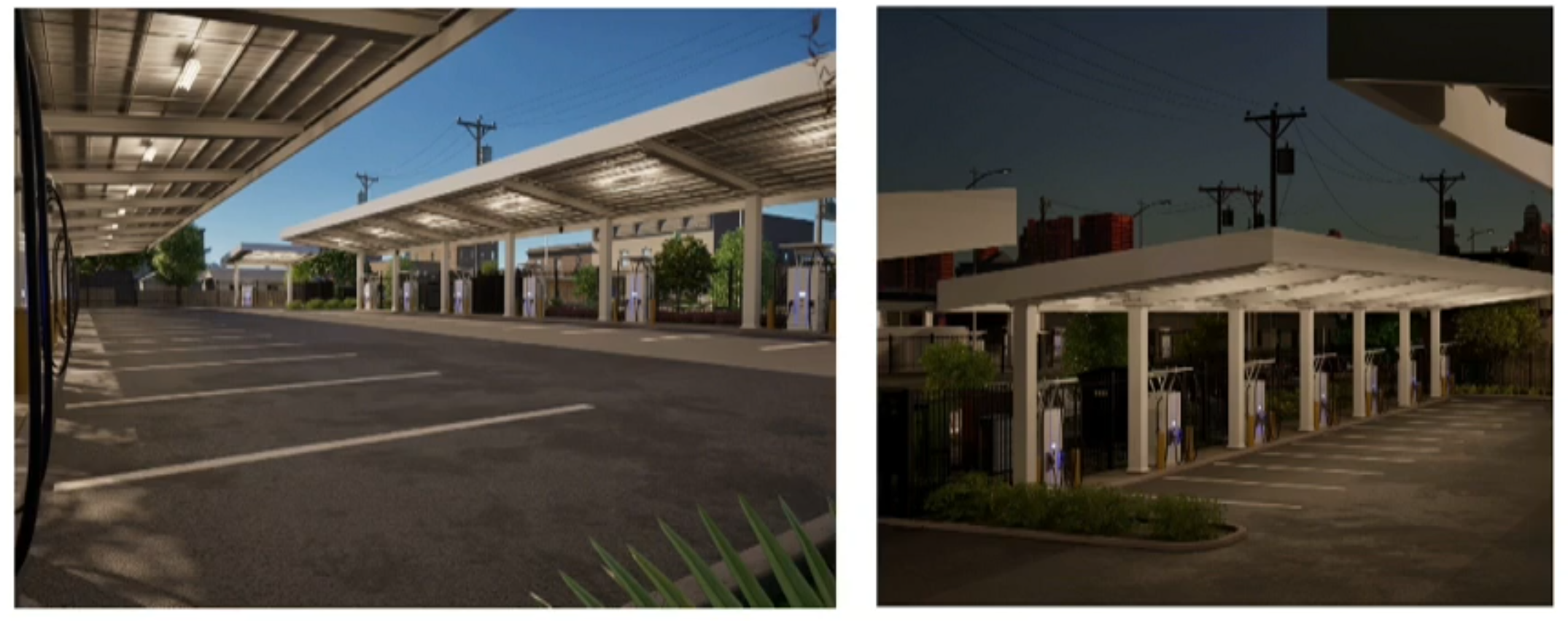Plans for an electric-vehicle charging lot spanning Pleasant Valley Road were thwarted by Planning Commission members who objected to its auto-centric nature at their last meeting.
The project would have created two electric-vehicle charging parking lots flanking Pleasant Valley at Cesar Chavez Street. The easternmost lot is currently home to a vacant building and a former home to food trucks, and the western lot is undeveloped. Under the neighborhood plan, off-street parking lots are a conditional use that requires approval by the commission.
Commissioners voted 7-3-3 to deny the request. Commissioners Adam Haynes, Patrick Howard and Grayson Cox voted against the denial, and commissioners Nadia Barrera-Ramirez, Jennifer Mushtaler and Ryan Johnson abstained.
“I really do think as a city that it’s important we have adequate EV charging infrastructure, but I would be much more comfortable if these charging stations were some sort of conversion from an existing auto-oriented use, like a gas station, rather than, in this case, a mixed-use site on an Imagine Austin corridor,” Commissioner Alice Woods said. “I just really don’t feel like this decidedly auto-oriented use is appropriate in this area that we’ve identified for walkability and pedestrian-oriented uses in our comprehensive plan.”
Other commissioners backed up this sentiment. Commissioner Felicity Maxwell noted that, blocks to the south, the city was investing in a new pedestrian and bike bridge that will bring more multimodal options to the neighborhood. And, though he said it was a “hard decision to make,” Commissioner Awais Azhar concurred the use was not appropriate for the area, which was targeted for transit-oriented and mixed-use development in city plans.
Jewels Cain, with the law firm Armbrust & Brown, presented the case on behalf of her client, Voltera. The company operates similar operations across the country, though this would have been its first project in Austin.
She told the commission that the lots would “help with the city’s climate action initiatives and help bring that much-needed infrastructure for electric vehicle charging.”
City planning staff supported the conditional use permit as well, saying it complies with the requirements of the Land Development Code and neighborhood plan goals. Though the Holly Neighborhood Association did not take a position on the permit or speak at the meeting, several neighbors did object to it.
Michael Phalan, who lives near the proposed project, was one.
“The intersection, though currently not developed to its potential, is and should be an important gateway into and out of the Holly neighborhood. East Cesar Chavez is essentially a Main Street for the Holly neighborhood, and I, along with several of my closest neighbors, would like to see this project moved elsewhere.”
Phalan said he would find commercial off-street parking a more acceptable use than what is actually being proposed, which he deemed as “more like a commercial fleet motor pool” that would bring much more traffic to an already-busy intersection.
“One can certainly envision drivers servicing, vacuuming and washing their vehicles, or conducting some other business or downtime activities on-site while they charge their vehicles. I do not think this business is genuinely off-street parking, and it is not fair to make a decision that EV charging and parking are the same thing,” he said. “I do not believe they’re the same at all.”
Though the Planning Commission does make the final determination about whether conditional use permits are granted, its decision can be appealed to City Council.



Dedicated charging stations are likely going to be necessary along interstate highways, and will probably integrate with present day “truck stops.” Motorists on long car journeys can stop, plug in the car, go to the bathroom, have a meal, etc. before resuming travel.
A dedicated charging station shouldn’t be part of anyone’s day to day around town commute. A typical commuter car will be parked for several hours at the drivers’ home, and several hours at the drivers’ work. Both of those parking structures are ideal for charging, and if enough electric cars are charged at those locations, it may get to the point where existing gas stations can be closed and their land repurposed to other non-auto tasks, or green space if possible.